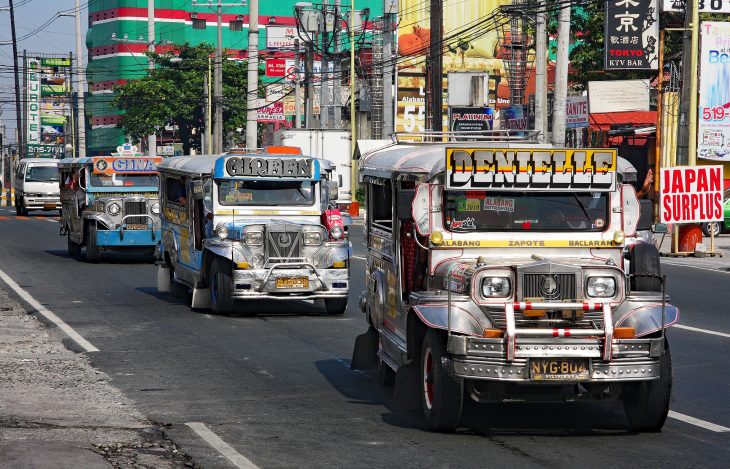
With over 7,000 islands, the Philippines is rich in culture and biodiversity. Throughout its islands, you can find many sights and tourism hotspots that reel visitors in with their charm. Despite centuries of foreign rule, the Philippines has now established its own identity with its national cuisine and art. Aside from its beautiful landscapes and wildlife, many people value Filipino warmth as a unique trait. However, there’s more to this country than being the land of adobo and friendly people. Find out more about the wonders of this country with these Philippines facts.
- The Philippines has 8 major dialects.
- There are 7,641 islands in the Philippines.
- After World War II in 1945, the Philippines was the first Southeast Asian country to gain independence.
- At 115,831 square miles, the Philippines is the 5th largest island country.
- The Philippines has had the highest discovery rate of new species within the last 10 years.
- Former President Benigno Aquino III is the first Philippine President known to be a bachelor.
- To date, a total of 16 Presidents took office in the Malacañang Palace.
- The country got its name from King Philip II of Spain.
- Covering 22,549 miles, the Philippines has the world’s 5th longest discontinuous coastline.
- You can expect around 125 to 170 languages that are spoken in the Philippines.
- The Philippines is the 5th-largest English speaking country in the world with over 52 million people speaking the language.
- Manila is the capital of the Philippines.
- The capital spans a land area of 42.88 square kilometers.
- Sampaguita is the national flower of the Philippines, blooming in bundles or singles on top of woody vines.
- The Philippines has almost 900 orchid species growing in all parts of the country.
- By the year 2050, it’s projected that the Philippines will become the 16th biggest economy in the world.
- Measuring 7.9 feet in width, 17.4 feet in length, and 6.6 feet in height, the world’s biggest shoes came from Marikina City, Philippines.
- Camiguin Island in the Philippines has the world’s most number of volcanoes per square kilometer
- However, Camiguin’s volcanoes have been dormant since the mid-1950s.
- With a 26.8-meter diameter, the largest Christmas lantern in the world can be found in Pampanga, Philippines.
There are 3 major islands in the Philippines.
One of the most well-known Philippines facts is that it’s an archipelago country. While the Philippines has thousands of islands, its three major islands are Luzon, Visayas, and Mindanao. By land area, the largest is Luzon, followed by Mindanao, with the Visayas islands as the smallest. Among the 7,000+ islands in the country, only around 2,000 are inhabited.
The people of the Philippines lived under Spanish rule for 333 years.
For three centuries, Spain took control of the Philippines as one of its colonies. It started in the 1521, when Ferdinand Magellan arrived at the island. This tyranny would continue until the Philippine Revolution in 1898 paved the way for the country to be free from Spanish reign.
The Philippines became the first and only US colony in 1898.
After the Spanish occupation, America settled in the Philippines. In 1898, Spain gave up the Philippines to the US. Upon this new rule, American colonization lasted for at least 48 years. When the Japanese came to the country, the Americans waged a war together with the Filipinos to fight the Japanese forces from 1941 to 1945. Finally, the Americans recognized the independence of the country in 1946.
Negros Island is the 4th largest island in the Philippines.
As part of Central Visayas, Negros Island spans 5,138.87 square miles with a population of 4,414,131 people. The idyllic beaches and city centers make this island thrive in tourism.
The people in the Philippines were once known as Pacific Islanders.
In a nutshell, the term Pacific Islander is used for people who live near the subregions of Oceania. Since the country is a part of Southeast Asia, people in the Philippines fall under the Asian category. However, the Filipino people were once described as Pacific Islanders.
Before Mexico's underground river, the Philippines held the world's longest subterranean river.
In 2007, Mexico‘s underground river of 10-kilometers in the Yucatan Peninsula was discovered as the longest underground river. But before that, the title belonged to Palawan, Philippines for its Puerto Princesa Subterranean River. Stretching for 8.2 kilometers, the area is still being preserved and protected despite no longer holding the world record.
The Philippine Cordilleras Rice Terraces is a Heritage Site.
In 1995, UNESCO named Cordillera’s Rice Terraces as a World Heritage Centre due to its blend of socio-cultural, the physical, political, religious, and economic significance. Built around 2,000 years ago, the rough terrain has helped the terraces to be preserved through the years, including the famous Banaue Rice Terraces.
The Philippines has a decade volcano.
In science, decade volcanoes refer to volcanoes with a history of destructive and large eruptions. Since most of these volcanoes erupt periodically, it’s important for scientists to keep a close eye on them especially if they’re near populated areas. Throughout the world, 17 decade volcanoes have been identified.
For the Philippines, one of them is the Taal Volcano in Talisay, Batangas. After 43 years of dormancy, it erupted again on January 12th, 2020. Interestingly, the Taal Volcano also stands out for the mini lake inside the volcano hosting a mini island as well.
The official language of the Philippines is Filipino.
Standardized with many varieties of Tagalog and Visayan languages, the Philippines’ official language is Filipino. From the Commonwealth Constitution in the 1930s, Tagalog has been the country’s Lingua Franca. With around 52 million people in the country that can speak it, English is also considered an official language.
The Philippines is the world's top supplier of nurses.
Throughout the world, around 11 million Filipinos work overseas. About 25% of all these overseas Filipino workers serve in the medical field, producing the most nurses in the US and around the world. Apart from nurses, they also deploy engineers, teachers, chefs, and other professionals to work abroad.

Boxing is a popular sport in the Philippines.
For the Filipinos, boxing symbolizes passion. Regarded as one of the world’s greatest professional boxers, Manny Pacquiao hails from the Philippines. Interestingly, every time Pacquiao has a match, the PNP or the Philippine National Police reports zero crimes in the streets of Manila. How’s that for neat Philippines facts?
The Philippines has the second oldest basketball association in the world after the NBA.
If you visit the country’s local areas, you would find makeshift basketball hoops on every corner of the street. While they mostly play it as a pastime, the Philippines also has the Philippine Basketball Association for professional careers in the sport. In fact, one of the little-known Philippines facts is that the Philippine Basketball Association is the world’s second-oldest professional basketball league after the NBA.
The majority of the people in the Philippines are Christians.
Although most of the countries in Southeast Asia practice Buddhism and Islam, most people in the Philippines practice Christianity. Because of the Spanish occupation, it’s not surprising that 90% of the population practices Roman Catholicism.
Buko is a world-class product from the Philippines.
Locally known as buko, coconut is a top export product of the Philippines. Globally, the Philippines also leads in coconut production. Each year, the country ships around 19.50 million tons or more of coconut fruit.
The Philippines is the texting capital of the world.
Known for being friendly people, the average Filipinos socialize and communicate a lot through social media, texting, and calls. Each day, an estimated 400 million text messages are sent in the Philippines alone, making the country the world’s texting capital. How’s that for cool Philippines facts?
Jeepneys are the most common mode of transportation in the country.
Each country has unique transportation systems that reflect their history and culture. For the Philippines, Jeepneys are widely available as cheap modes of transportation in many parts of the country. The open-air cab has parallel seats that can accommodate at least 10-12 passengers. While you can expect it to be a hot and bumpy ride, it’s a great experience for tourists visiting the country. With a minimum fare of $0.20 cents or 8 pesos, it’s also an affordable way to get around.
Boracay is the most popular tourist destination in the Philippines.
One of the first things you may associate with the Philippines is the white sand beaches of Boracay. Best known for its clear waters and powder-like sands, Boracay attracts around 1.5 million tourists each year. These numbers easily make it the most popular tourist attraction in the Philippines thus far.
The Philippines is prone to typhoons.
Due to its geographical location, the Philippines often experiences tropical cyclones. Flash floods, heavy rain, and strong winds can come and go anytime in the country. To date, Typhoon Haiyan is the deadliest typhoon the country has ever encountered. Locally known as Super Typhoon Yolanda, it claimed 3,100 casualties and over P500 billion in damages in 2013.
Filipinos have a reputation for being polite.
No matter your age, most foreigners will be called ma’am or sir. Younger ones siblings would also pay respect to their older brothers and sisters by calling them “ate” and “kuya” like other Asian countries. The use of po and opo also indicates respect towards elders and seniors.
The capital city of the Philippines is one of the most populated areas in the world.
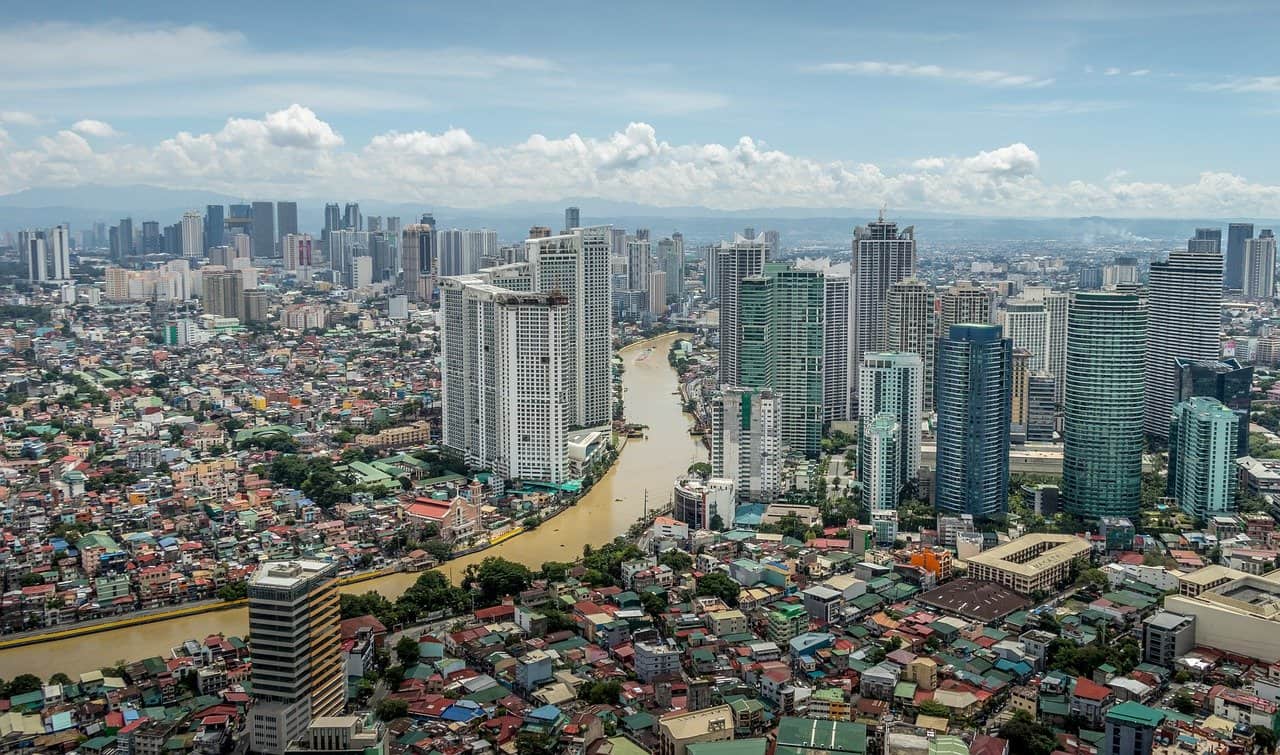
At 24 square miles, Manila serves as the country’s capital. However, its population of 1,660,714 is much more than the area can sustainably handle. This gives it a population density of 55,000 people in a square mile, which makes it the highest population density in the world. Generally, the city is a hustle and bustle of people, city lights, and – of course – heavy traffic!
A volcanic eruption from the Philippines created a sulfuric acid haze in the world for almost 2 years.
On June 15th, 1991, Mt. Pinatubo from the Philippines set off one of the largest eruptions in history. With the eruption site only a couple of hours away from Manila, it shot off 20 million tons of sulfur dioxide and 10 billion metric tons of magma.
Reaching 25 miles into the stratosphere, these substances created a sulfuric acid haze around the world that did not go away for 2 years. Taking the lives of 847 people, the eruption also displaced around 1 million people. Upon Pinatubo’s eruption, global temperatures also dropped at 1°F. This is definitely one of the Philippines facts to remember.
Human trafficking is prevalent in the Philippines.
According to a recent report, the Philippines ranks as the fourth country with the most number of children exposed to prostitution and sex trades. Approximately 375,000 women and children of all ages become victims of this illegal industry. Even worse, most of the victims are girls as young as 10- 11 years old.
The Anti-Trafficking in Persons Act of 2003 aims to help and protect Filipinos of all ages from sex slavery and human trafficking, but it has failed to curb these numbers.
The Philippines holds the record for simultaneous breastfeeding.
On May 4th, 2006, the Philippines snatched the simultaneous breastfeeding world record from Berkeley, California. Approximately 3,600 breastfeeding mothers gathered in Manila for simultaneous breastfeeding. Their efforts paid off, as they were able to top the 1,135 breastfeeding women as the current record. Now there’s one for bizarre Philippines facts.
The largest pearl in the world was found in Palawan, Philippines.
In 1934, a local fisherman from Palawan found what was once the largest pearl in the world. At the time, he did not know its value, keeping it as a good luck charm instead. Eventually, the local government of Palawan got ahold of the pearl and preserved it with great care.
Measuring 5.5 inches in diameter, 9.5 inches long, and weighing at least 6.35 kilograms, it used to be known as the world’s largest pearl until 2019. Believed to be 600 years old, the Pearl of Allah currently has a market value of $40 million.
People in the Philippines are superstitious.
Like any other country, the Philippines has a set of interesting superstitions that they believe in. One of the most bizarre superstitions is the concept of pagpag. Many Filipinos believe that you should avoid going home right away after visiting a wake. Instead, you should go elsewhere to fend off the deceased in case it follows you on the way home. How’s that for creepy Philippines facts?
You can find skunks in the Philippines.
They may be common in the US, but you’d rarely find skunks in Asia. Aside from America, it can only be found in the Philippines and Indonesia. Native to Palawan, the Stink badger is locally known as Pantot because of its powerful smell.
The national bird of the Philippines is already endangered.
Also known as the Monkey-Eating Eagle, the Philippine eagle became the country’s national bird in 1995. As the largest among all other species of eagles, it has a wingspan of 7 feet and stands 3.3 feet tall.
Sadly, they are now critically nearing extinction with only 180-400 eagles remaining in the wild. To protect the Philippine Eagle, Philippine law heavily punishes those who kill and hunt them. Offenders can be heavily fined or be sentenced to jail for 27 years.
The flag of the Philippines is the only one in the world that is hoisted down when it's on war.
Unlike most flags, the Philippines has its unique way of signaling that the country is at war. To symbolize war, they flip the flag upside down, with the red color on top and blue at the bottom. No other country in the world does this symbolic gesture in times of war. Definitely one of the most unique Philippines facts.
The first karaoke machine originated from the Philippines.
In 1975, Roberto del Rosario of the Philippines secured a patent for the first karaoke machine in the world. First called the Sing-Along System, the Japanese gave it the name karaoke, which means “singing with accompaniment”.
Universities in the Philippines are older than Harvard.
Founded in 1636, Harvard is an Ivy League University that is known far and wide as one of the oldest universities in the world. However, the Philippines has – not one – but two universities older than Harvard. In particular, San Carlos University and the University of Santo Tomas are prominent universities in the country, founded in 1595 and 1611 simultaneously.
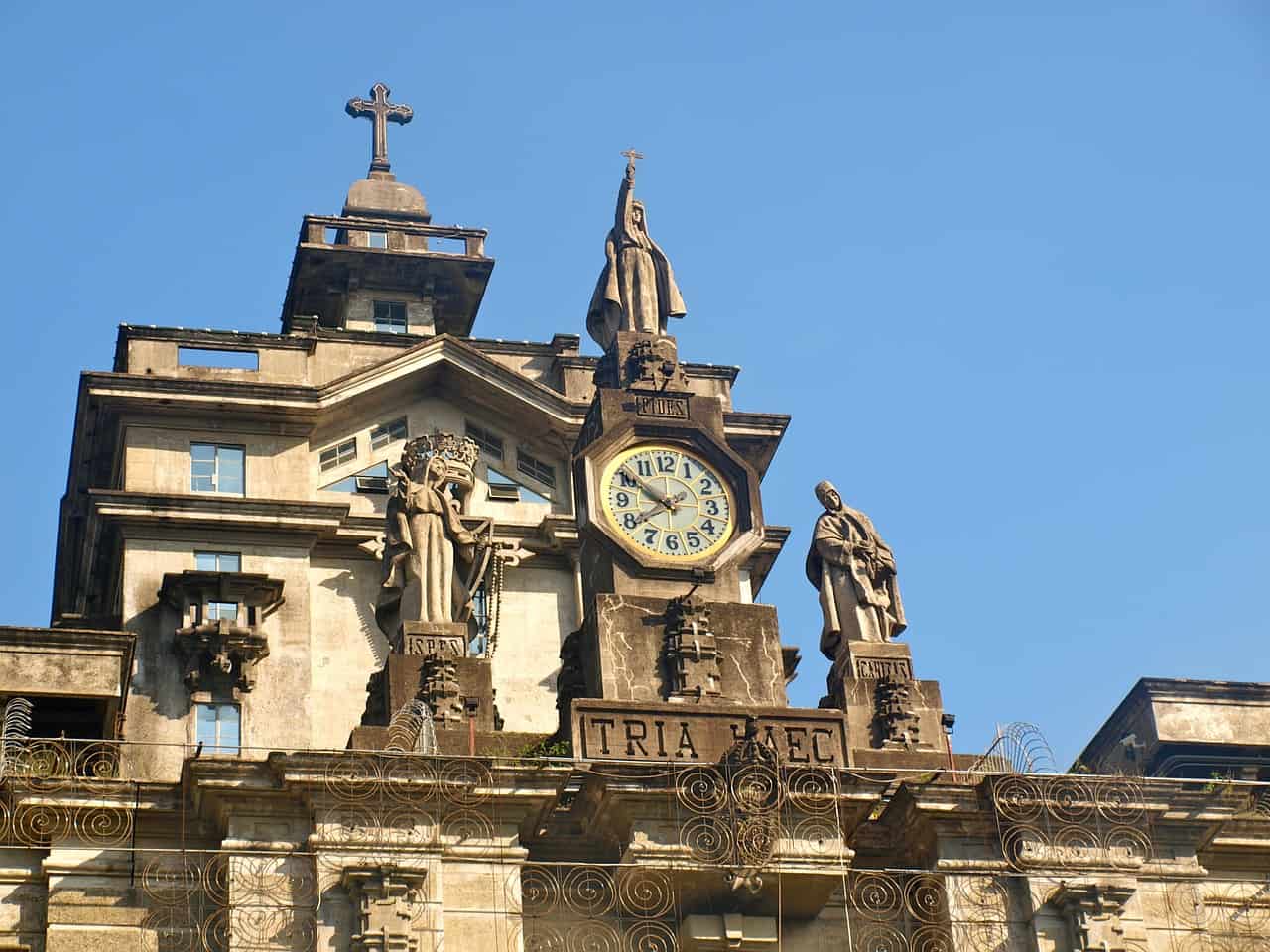
The Philippine Trench is the third deepest trench in the world.
Also known as Mindanao Trench, the Philippine trench is one of the world’s greatest ocean depths. This submarine trench can be found near the western part of the North Pacific Ocean, bordering the East coast of Mindanao. Covering 6.5 miles, its deepest point reaches 34,580 ft deep. In 1927, Germany’s SMS Emden first discovered the trench.
Christmas Season in the Philippines lasts the longest.
By the time September rolls in, you can already hear Christmas songs and bells ringing across the country in anticipation of the holiday. However, the festivities only officially start on December 16th, which is the beginning of the Misa de Gallo or the Night Mass for 9 days leading up to the actual date of Christmas.
Many Filipinos believe that if you can complete the nine masses, you can make a wish and it will come true. From there, the remaining festivities start on Christmas Eve until the Feast of the Three Kings in January.
The Philippines was the first Asian country to have a United Nations President.
War journalist Carlos Peňa Rómulo received the 1942 Pulitzer Prize for Correspondence. He made history as the first Filipino and Asian to ever bag the win. Not only that, but he also became the first Filipino and Asian United Nations President. At 16, he was already a reporter, an editor at 20, and finally worked as a publisher when he was 30. This is definitely one of the most inspiring Philippines facts.
A former Filipino president was buried in ice.
As the 10th President of the country Ferdinand Marcos served as president and dictator from 1965 to 1986. Although he was the first elected president in the country, he declared martial law from 1972 to 1981. When he died in 1986, he was not granted a burial for heroes because of the atrocities of his administration during martial law.
To preserve the body of the dictator, his remains were perfectly buried in ice for almost 2 decades. Despite many groups protesting against it, Marcos got his place at the Libingan ng Mga Bayani or the Cemetery for Heroes on November 18th, 2016.
Seven out of 8 giant clams in the world are in the Philippines.
Home to many rare animals and species, the Philippines holds a rich population of giant clams that can’t be found anywhere else in the world. In fact, seven out of all 8 giant clams live in the country, with six of them already being cultured. It’s important to preserve these clams as they help with the structure and foundations coral reefs. Aside from this, they also provide shelter for fish and other marine species.
The national attire of the Philippines is made from pineapple fiber.
Simply known as barong, the Barong Tagalog is a formal, long-sleeved embroidered shirt that serves as the country’s national attire for men. Meanwhile, the female counterpart is known as the baro’t saya. Both garments are woven from piña or pineapple fibers, typically worn during formal occasions and important events in the country.
The style of the dress and shirt draw influences from the colonial clothing of the Spanish and a mix of the Filipino pre-colonial native attire. How’s that for cool Philippines facts?
Burying a newborn baby's placenta is a common practice in rural areas of the Philippines.
Traditionally, burying a newborn baby’s placenta beneath the house symbolizes a parent’s hopes for their child. For rural areas, most women only call midwives to help them deliver their babies at home. Upon giving birth, the mother’s placenta is buried with an object that represents parents’ ambitions for their child. Now, there’s one for surprising Philippines facts.
The Philippines is big in cock-fighting.
The Philippines is home to the centuries-old blood sport of cockfighting. It has been around since the ancient times of Rome, Persia, and Greece. Up until this day, it’s a very popular sport in the Philippines, where men typically gather in an arena to watch their roosters fight. Each year, the country holds the World Slasher Cups two times.
A mythical-vampire like folklore in the Philippines has been featured in CW's Supernatural.
If you are a tourist in the Philippines, one thing that you should know is that Filipinos are fond of supernatural events. They have a rich culture when it comes to folklore, including the Aswangs. This mythical vampire-like folklore involves women that eat unborn children, lurking on the roofs of pregnant women. Since most of the houses in the province are made from nipa or bamboo leaves, their long tongues can easily penetrate the roof and take the baby from the mother’s womb. Due to its hype, thepopular American horror series Supernatural once featured an episode with an Aswang.
Adobo is the national dish of the Philippines.
Adobo is a dark stew that uses pork or chicken meat cooked in soy sauce, bay leaf, garlic, black peppercorns, and crushed garlic. Adobo is a Spanish word for seasoning or sauce. Historically, the cooking of adobo dates back even before Magellan arrived in the country. Now, that’s a yummy side of Philippines facts.
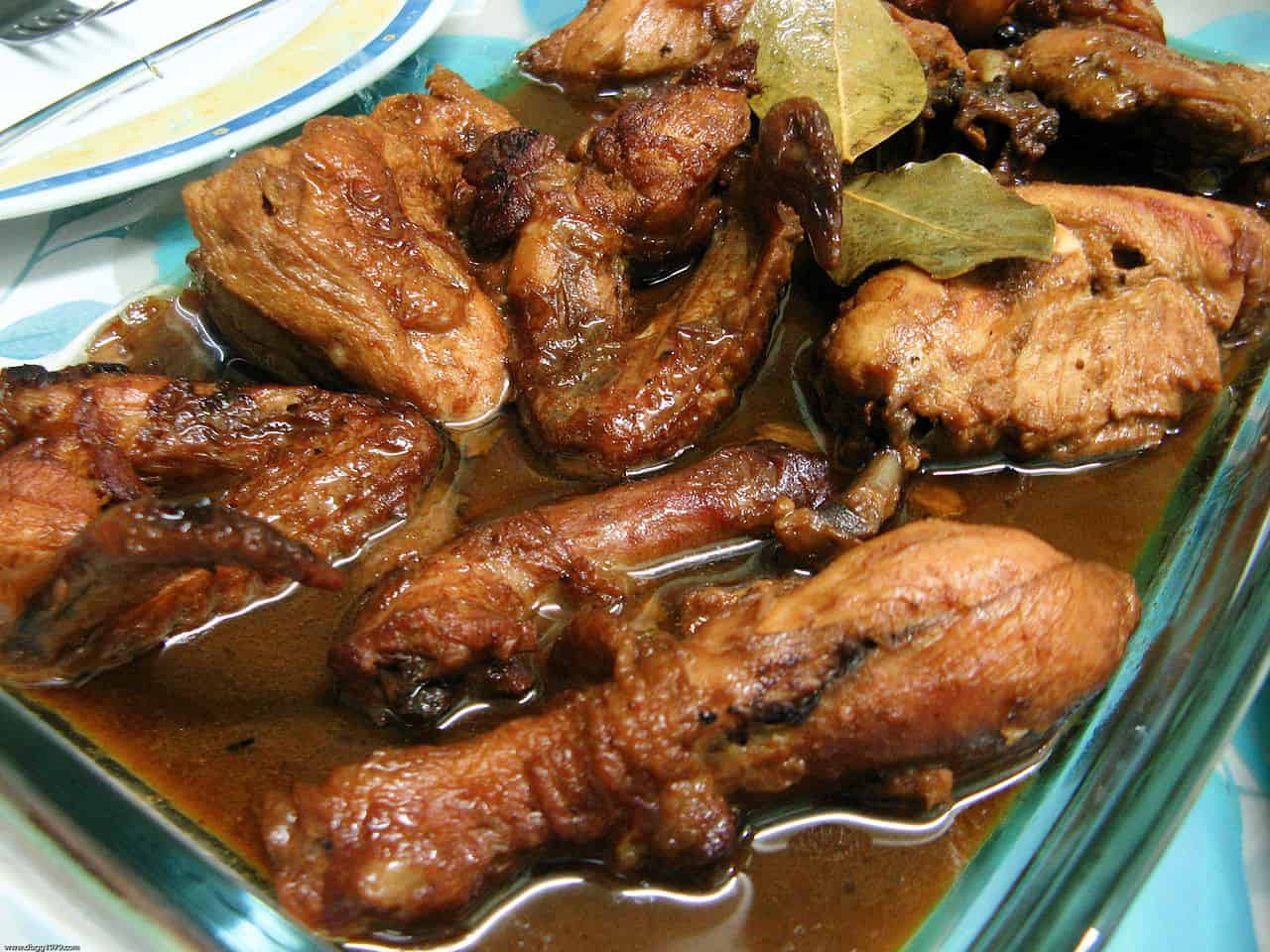
The National Hero of the Philippines was not explicitly proclaimed as a hero.
Author and multi-disciplinary scholar Jose Rizal has been lauded as the Philippines’ national hero. Through his writings, he exposed the oppression of the Spanish regime, leading many heroes in the country to start a revolution for independence. However, the Philippine government has not explicitly proclaimed Rizal as the official hero of the country. As a result, many other historical figures are considered the Philippines’ national heroes.
The first flag of the Philippines was sewn and made in Hongkong.
The first flag of the Philippines came into the picture at 35 Morrison Hill Road in Hongkong. Together, 3 women crafted the flag, namely: Marcela Agoncillo, her daughter Lorenza, and Jose Rizal’s niece, Delfina Herbosa de Natividad. Upon its completion, the flag made it back to the country on May 28th, 1898, first waved during the proclamation of the country’s independence on June 12th, 1898. To mark the first Philippine Republic, Then-President Emilio Aguinaldo waved the flag for the first time.
The longest-serving President of the Philippines served for 21 years.
Former President and dictator Ferdinand Marcos ran the presidential office from 1965-1986. Proclaiming martial law during his reign, he sat uncontested in the office for 20 years and 57 days. In 1985, he called for a snap election and got deposed from the seat. From there, Corazon Aquino became the next president of the country. With that, Marcos and his wife Imelda fled the country to hide in Hawaii.
Imelda Marcos left expensive collections in the Philippines.
When Ferdinand Marcos was forcefully removed from the presidential office, they hurriedly fled the country to escape to Hawaii. Because of this, his wife did not have the luxury to bring her collection of clothes, bags, shoes, and many more. In their retreat, she left behind 508 gowns, 15 mink coats, 1,060 pairs of shoes, and 1,000 handbags. Generally, it’s estimated that she had a total of 3,000 pairs of shoes. How’s that for shocking Philippines facts?
Tarsiers can only be found in the Philippines.
As one of the world’s smallest primates, tarsiers are native to the islands of the Philippines. With 13 species, these small creatures often become tourist attractions in Bohol and some islands in the country. Measuring a mere 9 to 16 cm long with distinctly huge eyes, it’s no wonder why people find them amusing or fascinating.
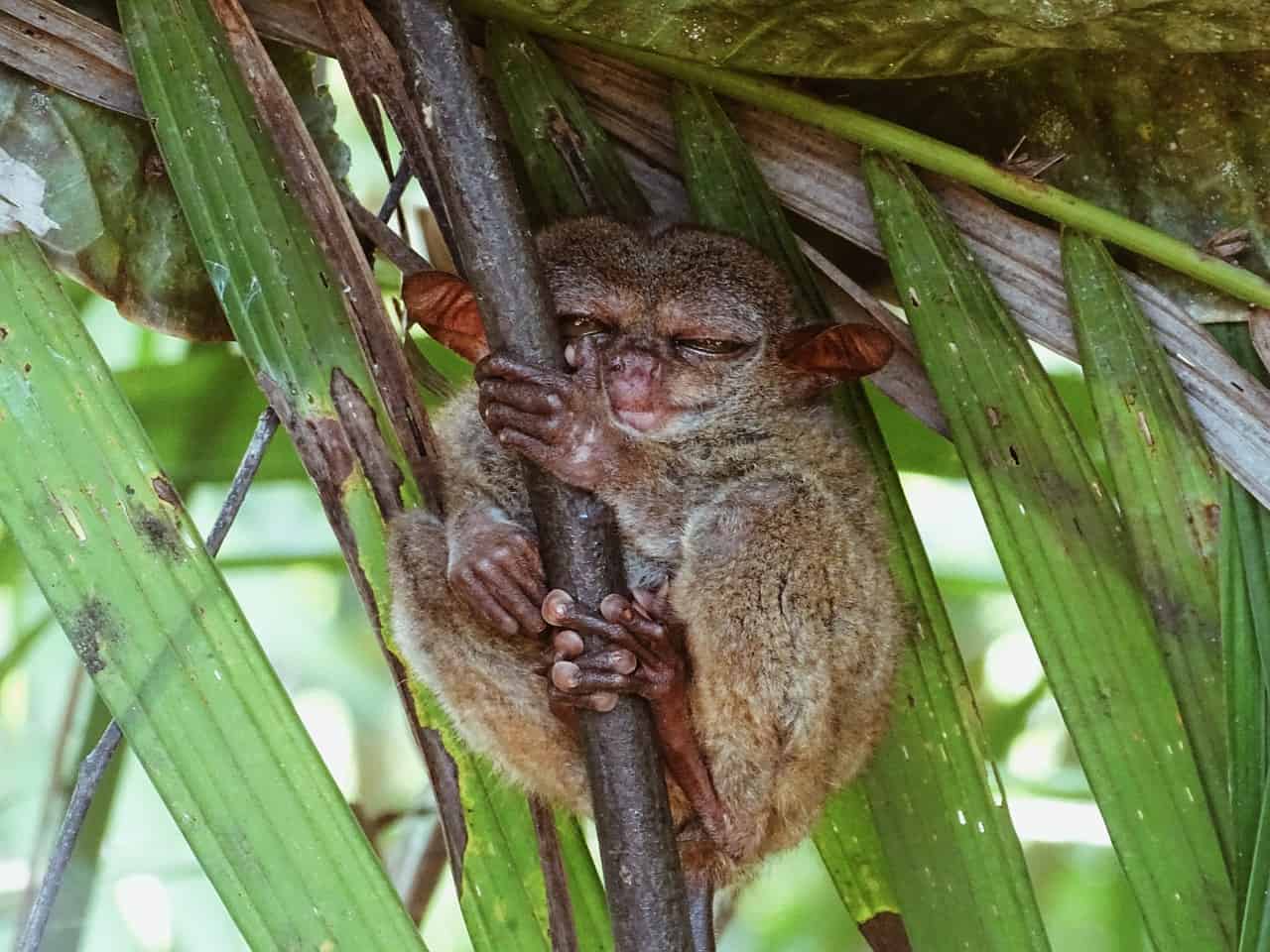
Halo-halo is a popular dessert in the Philippines.
The Halo-Halo mixes crushed ice, milk, coconut strips, kidney beans, pinipig rice, gulaman, and pearls for a cold, refreshing dessert. To top it off, a scoop of ice cream and a slice of custard cake makes this sweet treat. You can find halo-halo anywhere in the Philippines, from street vendors to high-end restaurants. Now there’s one of the Philippines facts you’d want to taste for yourself!
The official currency of the Philippines is the peso.
The Philippine peso or piso is the country’s official currency. It is produced by the Bangko Sentral ng Pilipinas in 1, 5, and 10 peso coins as well as different banknotes.
The longest bridge in the Philippines connects two islands.
Spanning 7,100 ft long and 10,620 meters across, the San Juanico bridge is by far the longest in the country. The bridge connects the neighboring islands of Samar and Leyte, which links Tacloban City to Santa Rita town. Underneath the bridge, the San Juanico Strait flows freely.
The Philippines has the sweetest mango in the world.
The Guinness Book of World Records recognized the Zambales mango as the sweetest mango in the world. Grown in Masinloc, Zambales, the fruit has a natural sugar content of 23%. The mango received the title at the 15th National Mango Congress in Zambales.
Another national flower is in the works.
Locally known as waling-waling, the Queen of Philippine Orchids is an endemic flower that can only be found in Mindanao. Because of its significance to the national ecosystem, this flower has been recognized as a potential national flower alongside sampaguita.
The surfing capital of the Philippines is in Siargao.
The tropical paradise of Siargao Island is found in the province of Surigao del Norte. With its teardrop-shaped form, it has become popular with foreigners and locals alike due to its pristine waters and beautiful waves. As one of its popular attractions, surfing in Siargao would let you connect with the island’s beauty with a kick of adrenaline.
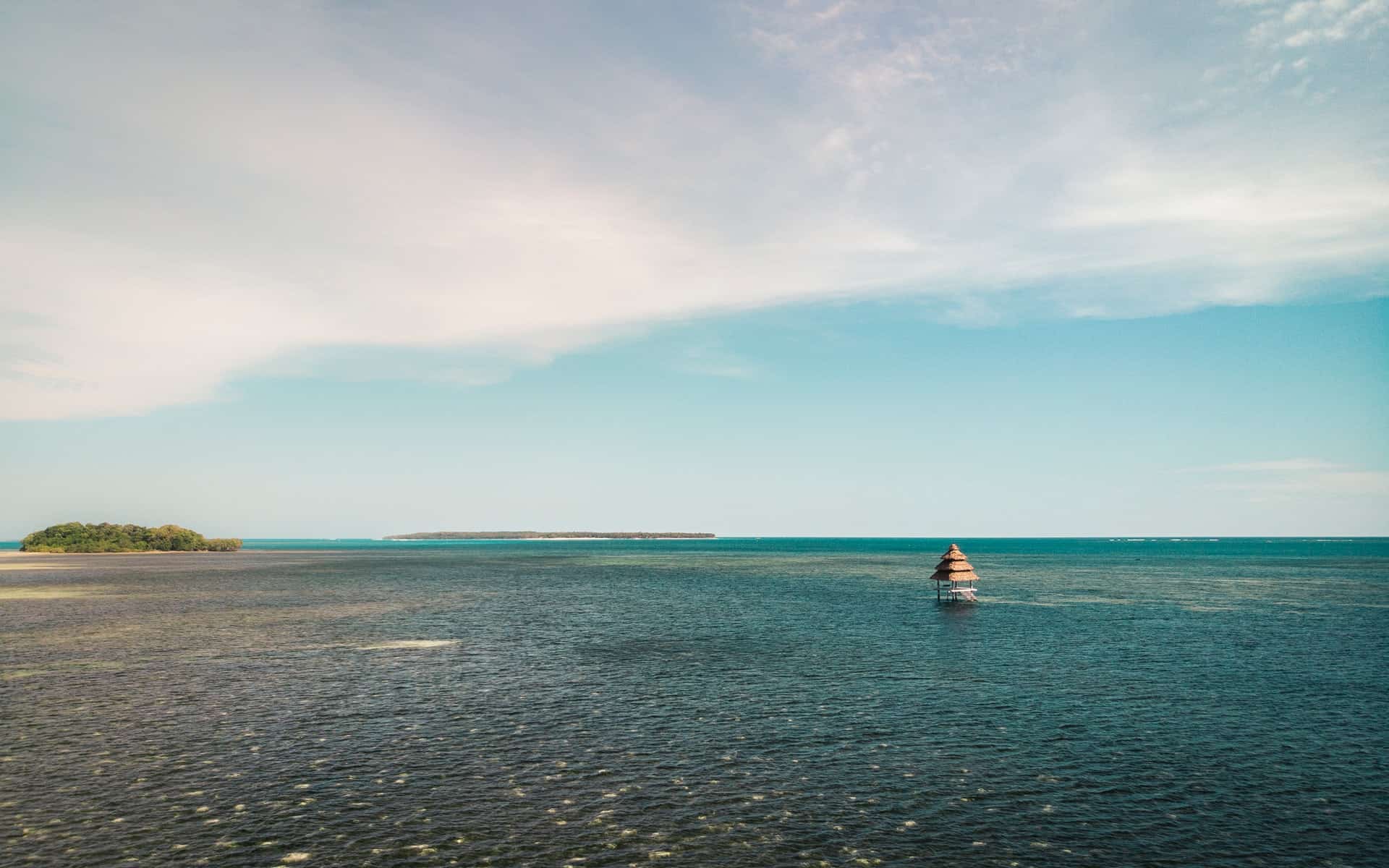
Philippine Airlines is Asia's oldest commercial airline.
The Philippine Airlines was the very first commercial airline in the Philippines and in Asia. Through the years, it kept its original name, running its services to this day.
The second-largest metropolitan area in the Philippines is in Cebu.
Found in Central Visayas, the islands of Cebu feature a diverse culture of 150 different islets. The Spanish colonizers first laid their ground in Cebu, so you can see traces and landmarks of the Spanish colonial era from the 16th century. You can find hints of its historic past in popular tourist spots like Fort San Pedro and the church at Basilica Minore del Santo Niño. All in all, Cebu is the second-largest city in the country after Manila.
The age of consent in the Philippines is relatively lower compared to other ASEAN countries.
On average, the age of consent for many of the ASEAN countries is 16 years old. However, the age of consent in the country is 12 years old. Although the legal age is at 18, you cannot be apprehended if you have sexual consent for those as young as 12 years old. This is one of the many reasons why rape cases are high in the country.
Rodrigo Duterte is the oldest elected president in the Philippines.
As the 16th president of the country, Rodrigo Duterte took office on June 30th, 2016. Elected at 71 years old, Duterte is the oldest President-elect in Philippine history. Additionally, he is the first Filipino president to hail from Mindanao.
Around 40,000 Filipinos were left homeless after the strongest earthquake in the Philippines.
In 1976, the Moro Gulf earthquake shook the Philippines with a magnitude of 7.9. As the deadliest earthquake in Philippine history, it claimed the lives of 3,000 people or more. It displaced 30,000 Filipinos and caused billions in damages.
Was this page helpful?
Our commitment to delivering trustworthy and engaging content is at the heart of what we do. Each fact on our site is contributed by real users like you, bringing a wealth of diverse insights and information. To ensure the highest standards of accuracy and reliability, our dedicated editors meticulously review each submission. This process guarantees that the facts we share are not only fascinating but also credible. Trust in our commitment to quality and authenticity as you explore and learn with us.


